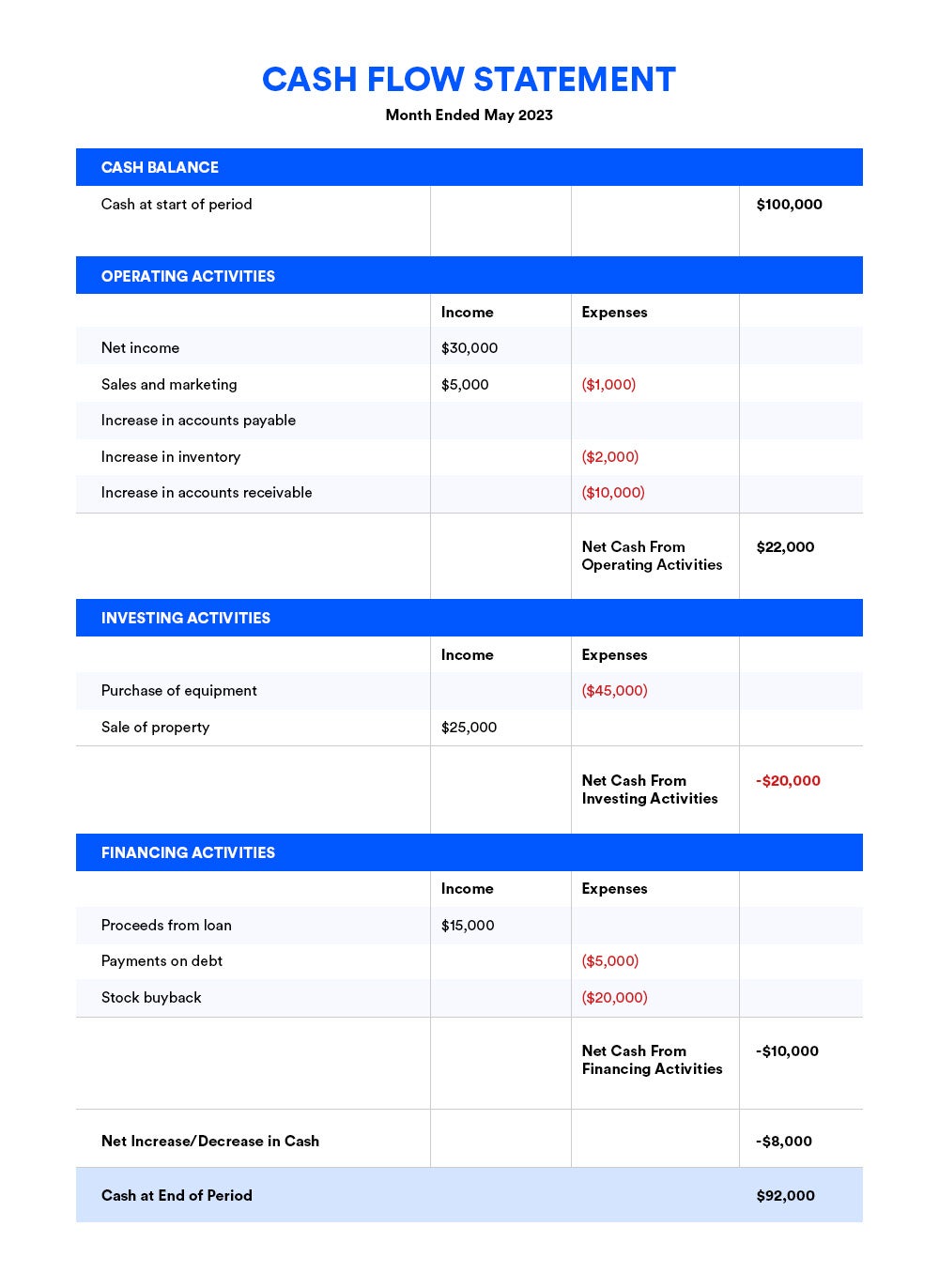How to do a cash flow analysis

The Bankrate promise
At Bankrate we strive to help you make smarter financial decisions. While we adhere to strict , this post may contain references to products from our partners. Here's an explanation for .
A cash flow analysis is a good way to analyze your company’s financial situation, income and expenses to figure out if your company has the funds to pay for its ongoing expenses. The more positive cash flow your business has, the more easily it can handle operating expenses, debt payments and other bills. Negative cash flow means pulling funds from savings.
Doing a cash flow analysis is important if you’re thinking about applying for loans or making expensive investments.
Key takeaways
- A cash flow analysis involves looking at your company’s incoming and outgoing cash
- Positive cash flow means your company can easily meets its obligations
- Before getting a loan or making a big purchase, make sure you have sufficient cash flow to support it
What is a cash flow analysis?
A cash flow analysis is the process of closely examining your company’s sources of income and expenses. It’s commonly used to analyze a business’s working capital, the money it can use for day-to-day expenses.
A cash flow analysis is important because it examines the sources of income and expenses closely to better understand the company’s situation.
For example, a company may have strong cash flow, but if it comes from easy access to credit, that’s quite different than if it comes from sales.
How to prepare a cash flow analysis
To prepare a cash flow analysis, follow these steps.
1. Create a starting balance
The first thing to do is figure out what accounting period you’ll look at. It’s common to perform cash flow analysis on a monthly, quarterly, semiannual or annual basis.
Once you’ve chosen the period you’ll be looking at, find your company’s cash balance at the start of the period.
2. Identify cash coming in
Once you’ve found your company’s starting cash balance, you’ll look for sources of incoming cash during that period. Find the total income from all sources, such as:
- Income from sales of goods or services
- Interest income
- Cash received from the sale of property or investments
- All other income
You’ll need to look through your company’s records to identify all the income sources. Check every document, including balance sheets, profit-and-loss statements and other records to identify every transaction.
3. Identify cash going out
Next, you’ll look at all your cash outflows during your analysis period. Tally up the money spent on things like:
- Wages paid
- Sales and marketing
- Inventory purchased
- Deferred revenue
- Depreciation
- Income tax
- Anything else that you spent money on
4. Create cash flow statement
Once you’ve found all of the sources of income and expenses in your business, you’ll need to categorize them. Cash flow analyses typically group income and expenses into three categories:
- Operating activities. These are core business activities. If you run a store, this could include revenue from sales and expenses like wages and inventory. Sale of real estate or interest income wouldn’t count. Ideally, you’ll have a positive number here.
- Investing activities. This is where you account for any income and expenses related to long-term investments such as asset purchases, purchase or sale of stocks, bonds or other securities, and other investments. Negative numbers are common here because you expect to benefit from investments, like new machinery or technology, for many years and to use it to improve operating cash flow.
- Financing activities. This covers any money received from loans and money paid back to lenders; it can also include business credit card use if you carry a balance. It’s also where companies note things like stock issues or buybacks. Negative numbers are usually good here because they indicate the repayment of debt or payments to shareholders.
What to look for in cash flow analyses
Once you’ve prepared your cash flow statement, it’s time to analyze it to understand your business’s finances.
Start by looking at your overall cash flow. Is it positive or negative? In general, positive numbers are good, while negative numbers can be a bad sign. But short-term negative cash flows, especially those caused by purchasing key investments, such as real estate or machinery, aren’t necessarily bad.
A common item people look for is free cash flow. This is a measure of how much cash your business generates after accounting for operating costs and maintaining key assets.
Keep in mind that the cash flow statement for companies in different stages of their lifecycle will look quite different. Startups will almost certainly have highly negative cash flows, relying on investments and savings to grow. Established blue chips should have highly positive operating cash flows and likely have neutral investment cash flows.
Cash Flow Analysis Example
To get a better understanding of a cash flow analysis, consider this example:

Bottom line
Cash flow analysis can be incredibly helpful if you want to get a sense for the stage your business is in or where its money is coming from. It can also be helpful for understanding your company’s ability to afford new loans or major investments.
Frequently asked questions
-
A cash flow analysis involves examining your company’s sources of income and expenses to determine its financial health.
-
The three types of cash flows are:
- Operating cash flow. Those related to the company’s core operations.
- Investing cash flows. Those related to buying or selling long-term investments and property.
- Financing cash flows. Those related to loans and share issues/buybacks.
-
No, cash flow and profit are different. A company can have positive cash flow through borrowing money or selling assets, even if its profit is negative.
Related Articles

How to make debt work for you: Build wealth with a personal loan


